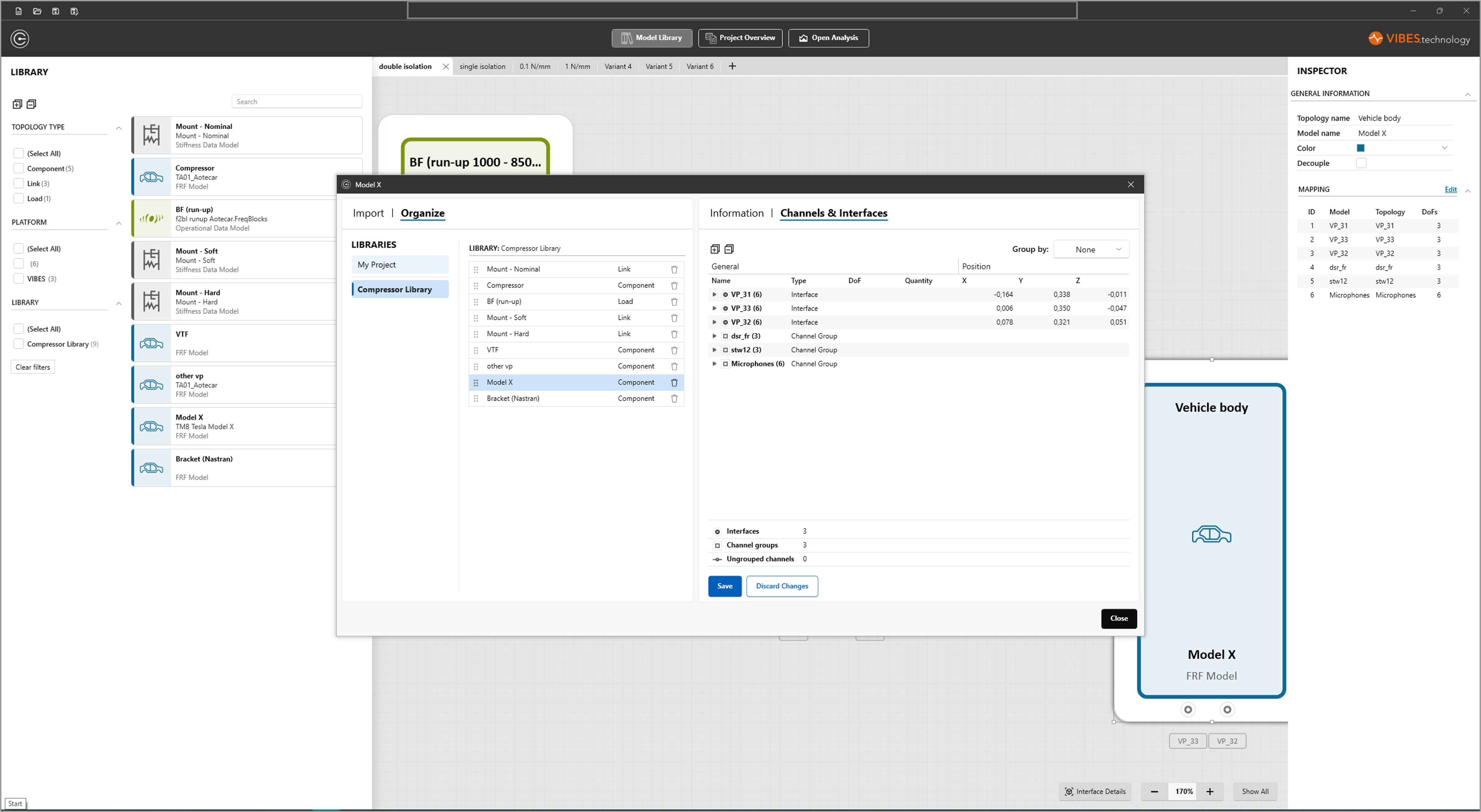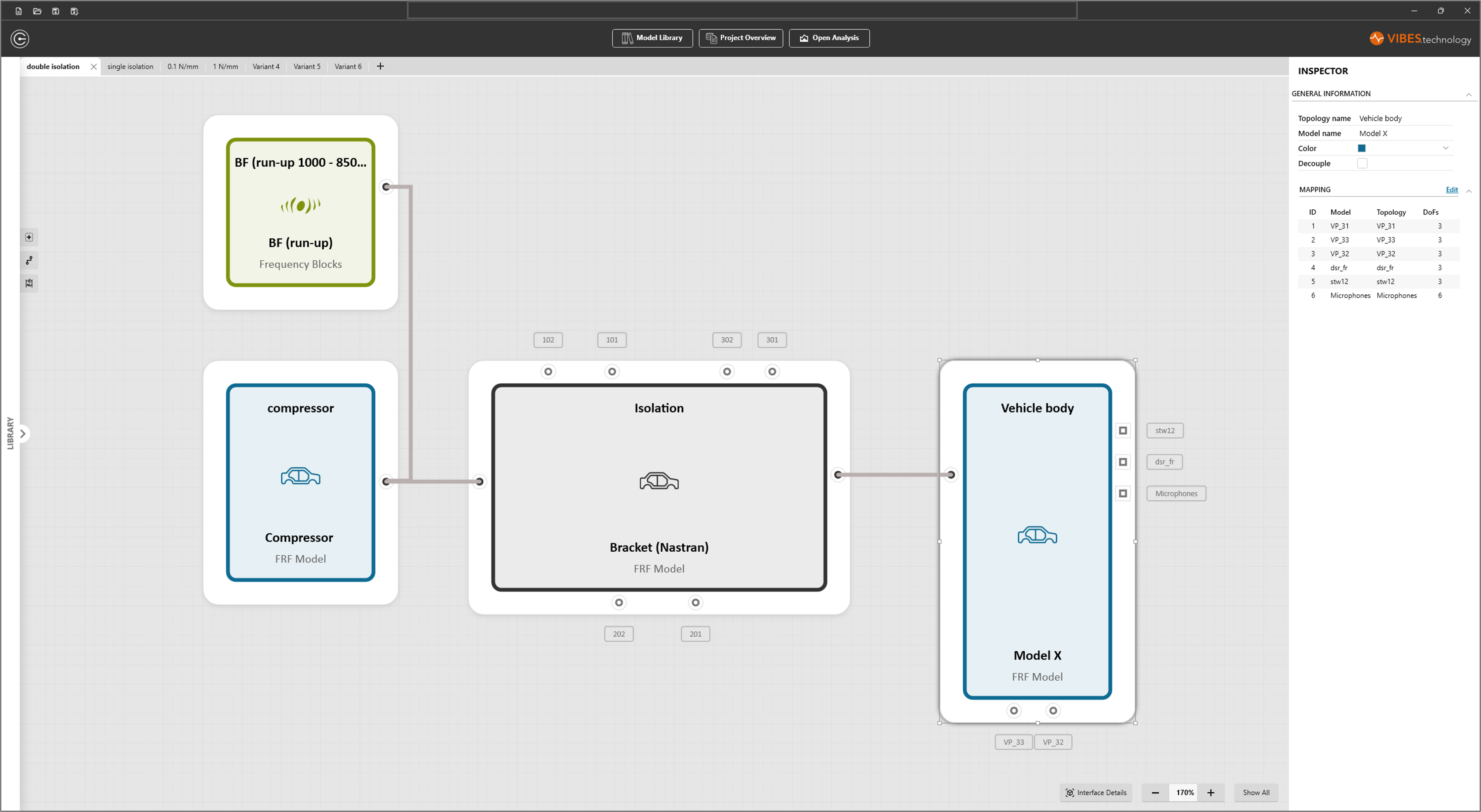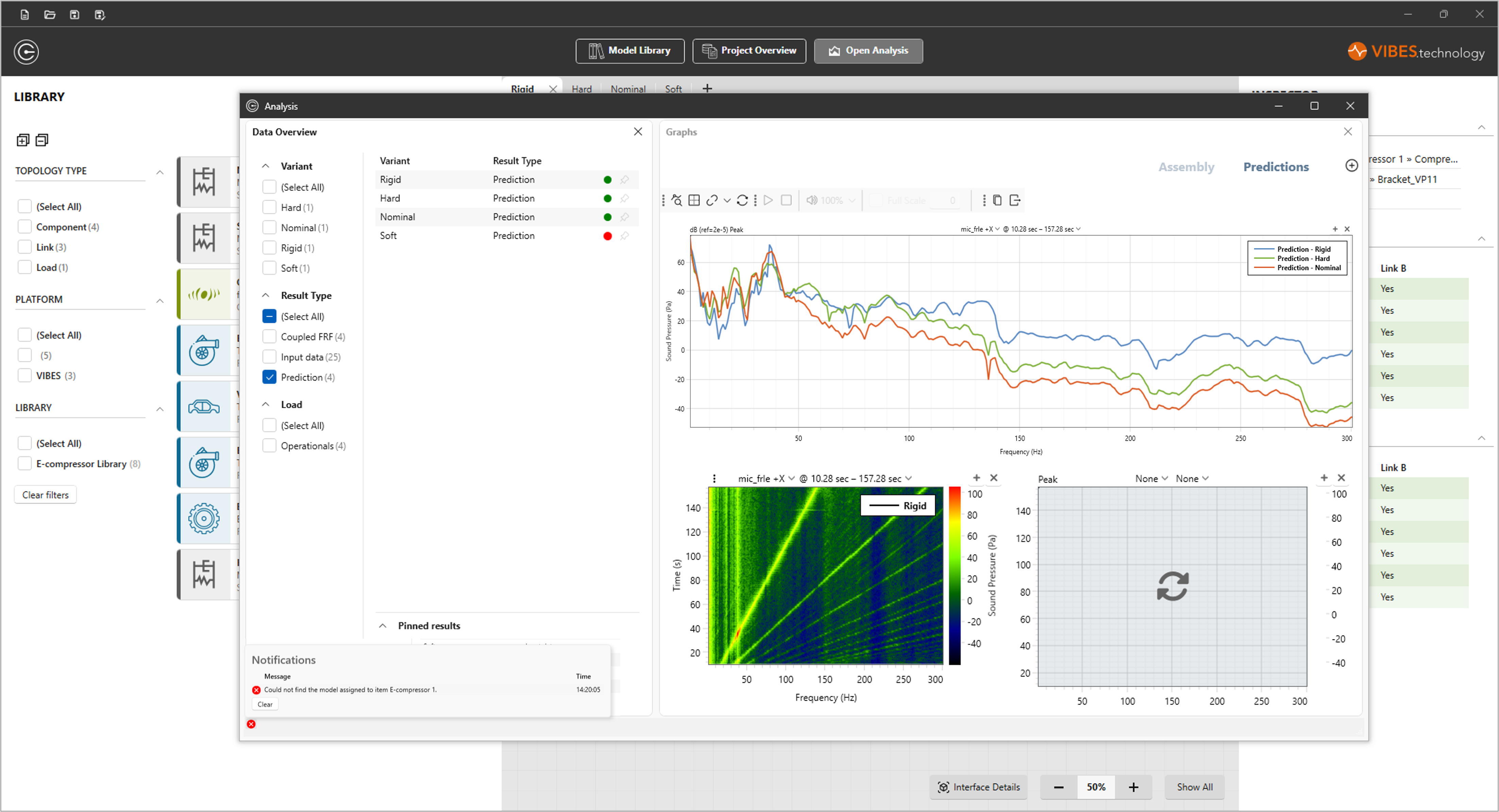COUPLE
Assemble. Predict. Optimize.
COUPLE allows you to assemble, predict and optimize your NVH design in a complete modular workflow. Especially when your models come from DIRAC and SOURCE, COUPLE offers you a modular NVH approach where you can easily combine test-based models with models from simulations.
A modular way of working is the new standard in NVH design. It allows multidisciplinary departments to work together on a global modular level without sacrificing their ability to focus on the details of each module locally. The modeling methods required for this are already in place in the form of Dynamic Substructuring.
VIBES developed a standalone test-based modeling application to perform hybrid Dynamic Substructuring: COUPLE. Where SOURCE enables you to characterize vibrational sources and DIRAC to create high quality test-based component models, COUPLE completes the workflow.
COUPLE allows you to assemble, predict and optimize your NVH design. This way, late-phase troubleshooting is avoided, and fewer iterative design cycles are needed, saving time and resources. All in all, reliable full-vehicle models are available much earlier in your development process.
Project management
Separation of model and topology allows your assembly to be set up once, and models coming from different sources to be replaced in your project throughout the design cycle.
These models are simple to manage and modify, with features such as smart interface creation to ensure your project is always set up effectively.
A shared library allows models to be easily shared between colleagues/departments/suppliers and ensures a single source of truth.
COUPLE can effectively merge test based and numerical models in assemblies.
Unique variant and optimization scheme
Using the Design Area, COUPLE allows you to create and manage different variants with ease.
Each interface between topologies can be precisely managed , with control over specific degrees of freedom.
Mass points and (dynamic) interface stiffness may be added to links between topologies to investigate the effects and sensitivities of these locations.
Fast predictions and sound synthesis
A pull-based calculation mechanism ensures results are only calculated when needed for plotting. This allows COUPLE to be used to manage, and generate, 10000+ variants simultaneously without long calculation times.
These results can allow the auralization of assemblies merging test based and simulation based models. Predictions are also able to be made modularly using time, frequency and order data




